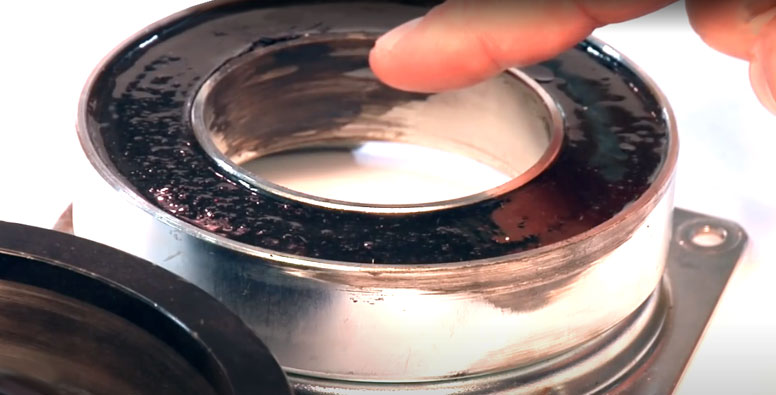
How to kill your pump clutch in seconds - rotor strike
Proper installation is critical for most components, and it is especially true for pump clutches. If done wrong, your clutch could be smoking in a matter of seconds. Two-piece electromagnetic clutches are used on hydraulic pumps, compressors, and small vacuum pumps for mobile applications such as tow trucks, snowplows, ambulances, service vehicles, and more.
Electromagnetic clutches with static torque ratings up to 175 lb-ft are predominantly two-piece designs. They are made in two basic configurations and the main difference is how they mount to the pump or compressor. The field coil can be a flange mount or an inside mount. For either type, it is critical that the field coil is mounted concentric to the pump shaft.
The rotor/armature/pulley assembly is the second piece of the clutch, and it is inherently concentric to the shaft because it mounts directly on the shaft and held on with an end bolt. When fully mounted, the rotor assembly and the field coil will have a small radial clearance. This is to ensure optimal performance and torque carrying capability of the clutch. If the field coil is not mounted concentric to the shaft, the rotating parts will rub. The rubbing usually is evidenced on approximately 1/3 of the field coil assembly. The friction would occur upon start up, and in worst cases, high speed rubbing will cause the heat buildup to be intense. It can burn up the coil, leave blue marks on the steel, and fail the clutch in a matter of seconds. Even slight rubbing can fail a clutch in a matter of minutes or hours.
To prevent this type of failure, pump or compressor manufacturers often like to use a tapered mounting centering device that fits over the shaft to properly position the field coil before bolting it to the pump or compressor. This provides proper concentricity of the field coil. For field service replacements, this can be a bit more difficult because the service person may not have the same mounting assistance tool. To make matters worse, the mounting holes may be stretched, worn, or modified by others after installation. At this point, the best approach is to align the filed coil as concentric as possible to the shaft, mount the rotor assembly and then hand rotate the shaft to check for any rubbing noise or resistance. If noise or resistance is found, the clutch should be removed and re-installed until all is correct.
For smaller pumps and engines, the Ogura MA Series clutches are available in torques ranging from 58 to 175 lb. ft. For pumps requiring higher horsepower, the MMC Series are rated from 200 to 1500 lb. ft. A variety of bore sizes and pulley options are available from stock.
Benefits of using an Ogura mobile and general purpose clutches:
- Long life
- Safety and convenience with remote starting
- Fuel and energy savings
- Built for outdoor operation
- Many years of proven success
- Custom designs available based on minimum order quantities
- Reduced engine load on cold weather starts
- Increased operational life of driven equipment
- Simple installation

